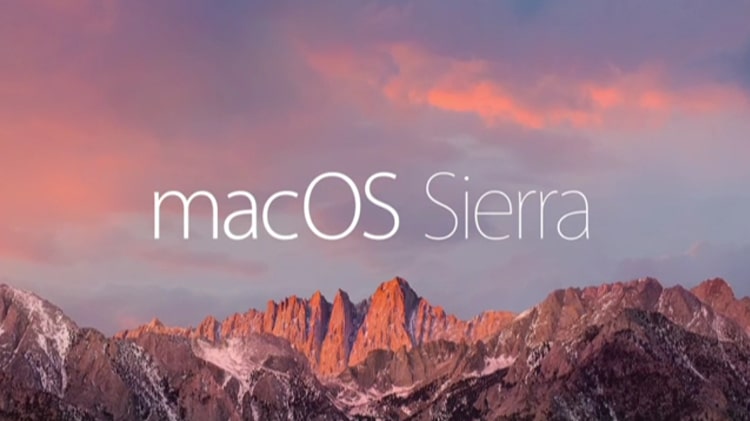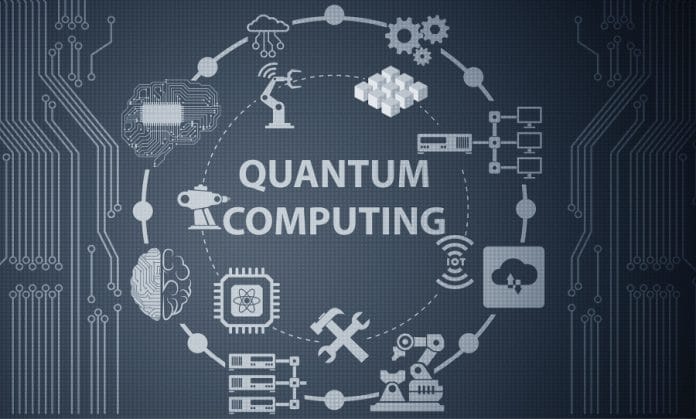Quantum computing is the use of quantum-mechanical phenomena such as entanglement and superposition to perform computation. It can help solve tough challenges and certain computational problems much faster than classic computing architectures.
Quantum computing (QC) is no longer limited to academic research and conference presentations but has made its debut in the industry, though it is still in its infancy stages.
As per Wikipedia, “Quantum mechanics (also known as quantum physics, quantum theory, the wave mechanical model, or matrix mechanics), including quantum field theory, is a fundamental theory in physics which describes nature at the smallest scale of energy levels of atoms and sub-atomic particles.”
The era of quantum mechanics started in 1990 when Max Planck put forward the theory that everything is made up of small particles, which he called quanta. Quantum physics is related to that part of physics that studies small ‘waves’, in order to study the behaviour of matter and energy. The word quantum means ‘how much’ in Latin. In quantum physics, the entire universe is a series of predictions or possibilities. Matter can move from one place to another, and the state of one particle is dependent on that of others, which places a constraint on every other particle — this is called entanglement.
Quantum computing operates on the rules of quantum mechanics, such as superposition and entanglement. It can help solve tough challenges and certain computational problems much faster than classic computing architectures. Quantum computers are devices that perform quantum computing. The characteristics and principles of quantum physics are used in processing data, and these are based on the laws of mechanics.
How quantum computing differs from classical computing
Quantum computing is all about exploring possibilities while solving computational problems. Classical computing explores only a subset of these possibilities.
Classical computers are built from silicon chips which have millions of transistors that can be turned ‘on’ or ‘off’, and always exist in a single state. In classical computation, the unit of information is a bit, which can be 0 or 1. All processing can be done by simple logic gates (AND, NOT) acting on these bits. The states are distinguishable and observed without disturbing the system.
Quantum computers use ‘quantum bits’, or ‘qubits’, which are a superposition (that can exist in more than one state) of 0 and 1. A 2-qubit quantum machine allows you to do four calculations at once. A 3-qubit quantum machine can do eight calculations. A 4-qubit machine gives you 16 calculations, simultaneously. A quantum machine with ‘n’ qubits can be in a superposition of up to 2^{n} unique states simultaneously. The state of a qubit can depend on the state of another qubit. Due to this, the qubits can be entangled, which is another characteristic of quantum mechanics.
This capability enables quantum computers to solve certain types of complex problems and do parallel processing, which is not possible with conventional computers. The power of qubits is that they can exponentially scale and speed up, as the computations occur in parallel.
Types of quantum computers
The various types of quantum computers in use today are:
- Superconductor-based quantum computers (including SQUID-based quantum computers)
- Ion trap based quantum computers
- Quantum computers based on ‘nuclear magnetic resonance on molecules in solution’
- Gate model quantum computers
- Quantum computers based on ‘quantum dot on surface’
- Quantum computers based on ‘laser acting on floating ions (in vacuum)’
- Molecular magnet based quantum computers
- Solid state NMR Kane quantum computers
- Adiabatic quantum computers
There are a few different ways to create a qubit. One method uses superconductivity to create and maintain a quantum state. To work with these superconducting qubits for extended periods of time, they must be kept very cold. Any heat in the system can introduce errors, which is why quantum computers operate at temperatures close to absolute zero.
The quantum computing technology landscape
There are many leading organisations working on quantum computing (QC). IBM, Microsoft, Alibaba, D-Wave Systems, Google, Nokia, Fujitsu and Intel continue to work and compete with each other in this field. As the research in QC matures, these companies are working rigorously to deliver seamless data encryption, real conversations with AI, and better financial modelling through quantum technology.
IBM: IBM has been working to develop a quantum computer for over 35 years. Less than a year ago, the company released a 5-qubit and a 20-qubit quantum computer, which offered quantum computing as an advanced cloud service. Multinational companies such as JPMorgan Chase, Daimler (which uses QC in logistics for optimising vehicle delivery routes), Honda, Samsung and Barclays (which uses QC for the settlement of large batches of transactions) were the first to sign up for the active testing of the service.
Google: Google has announced a 72-qubit quantum processor called Bristlecone, and signed an agreement with NASA to achieve supremacy in this field.
Microsoft: Microsoft has announced the Microsoft Quantum Network, which is a formal coalition of developers, partners, universities, leading startup talent, quantum innovators and customers to share knowledge and build a quantum computer, collectively. The coalition has open sourced the quantum computing development kit, which includes the quantum programming language Q# and the simulator.
Microsoft and Alphabet have partnered with Brilliant to introduce an online curriculum on quantum computing. It covers the basic concepts and introduces Microsoft’s Q# language with simple algorithms, before moving into complex and advanced scenarios.
D-Wave Systems: D-Wave has built the world’s first commercially available quantum computer with a simpler technology but with limited capabilities. The research focus of D-Wave is on how quantum computing can be applied to artificial intelligence, machine learning and difficult optimisation problems. In January 2017, the company sold its first 2000 qubit D-Wave 2000Q to cyber security firm Temporal Defense Systems.
Intel: In January 2018, Intel announced the delivery of a 49-qubit test quantum processor called Tangle Lake.
IonQ: IonQ is building a quantum computer based on the trapped ion technology.
Alibaba: Alibaba has designed an experimental quantum computer that is available online. In March 2018, it launched its ‘superconducting quantum computing cloud’ to provide access to an 11-qubit quantum computer. Developed with the Chinese Academy of Sciences, this allows users to run quantum programs and download the results.
Quantum computing applications and users
The implications of true quantum computing at scale are staggering and can have a tremendous impact on society. Quantum algorithms can be applied in a variety of industries for the following:
- Optimisation problems such as scheduling and route planning — to find out the best possible options out of a large number that are available
- Search, sampling and pattern matching
- Quantum encryption
- Industries – life sciences, finance, logistics, robotics and more
Machine learning and computer science: QC processes orders of huge magnitude more effectively than classical computing can. It allows the comparison of much more data in parallel, simultaneously, and all permutations of that data, to discover the best patterns that describe it. This will lead to fundamentally more powerful forms of AI, much more quickly than we expect. The speed at which the world develops AI will go up considerably with the power of QC. It helps in the following:
- Detecting statistical anomalies
- Finding compressed models
- Recognising images and patterns
- Training neural networks
- Verifying and validating software
- Classifying unstructured data
- Diagnosing circuit faults
Financial services: JPMorgan is working with IBM to explore how quantum computers can assist with trading strategies, portfolio optimisation, asset pricing and risk analysis. Similarly, Barclays is also participating in the IBM Q Network to investigate if quantum computers could be used to optimise the settlement of large batches of financial transactions. In addition, QC also helps in detecting market instabilities, optimising trading trajectories and asset pricing, as well as in hedging.
Healthcare and medicine: QC allows users to model complex molecular interactions at an atomic level. This helps in medical research, leading to accelerated drug discovery. Functions like drug design, molecular dynamics, fraud detection, optimising therapy treatments, and creating protein models while optimising the effects, can be addressed by QC.
QC helps in the analysis of drug interactions, finds cures for previously incurable diseases and helps to accelerate the time to market for new drugs.
QC simulations can help to design and choose the next generation of drugs and cancer cures. Research towards this is under way.
Air traffic management: In 2011, Lockheed Martin was the first purchaser of a quantum computer manufactured by D-Wave Systems and has continued to investigate the uses of the technology for application in air traffic management and system verification.
Airbus is similarly investigating how quantum computers could speed up its research activities and has invested in the quantum computing software company, QC Ware.
Transportation: Mobility as a Service (MaaS) helps to optimally distribute transportation capacities in a very dynamic urban system, where there are millions of transportation requests from people and for goods, at short time intervals. QC helps to make the transportation system highly reactive to disruptions.
QC helps in analysing the congestion caused by traffic accidents, commuter-train line breakdowns, extreme weather events, etc. This leads to the setting up of a dynamic transport system that handles the requests in real-time.
Challenges in quantum computing today
The following are the challenges in QC:
- Limited access to QC hardware and limited know-how on how to leverage the potential of QC hinder the development of quantum software.
- The lack of good software, i.e., more QC algorithms that solve real-world problems.
- Limited access to industrial manufacturing facilities makes it challenging to explore the scaling up of QC.
- Technological challenges like limited qubit connectivity, too low gate fidelities, or the large amounts of qubits required for error correction. Therefore, detecting, controlling and correcting of errors becomes a major challenge.
- Lack of collaboration and exchange between industry and academia.
- The inability to leverage superconductivity to create a qubit and maintain a quantum state. To work with these superconducting qubits for extended periods, requires them to be maintained at very low temperatures. Quantum computers operate at temperatures close to absolute zero, colder than the vacuum of space. Maintaining such a low temperature is a big challenge.
- The current quantum computer structure makes it difficult to ever build QC into devices such as mobile phones.
The processes of quantum physics are very sensitive to any kind of disturbance from the environment, such as heat, radiation and magnetic fields. For this reason, quantum computer chips are protected by several levels of shielding and cooled down almost to absolute zero (-273 °C). One or more quantum computers could be set up in today’s computer centres and used on site or via the cloud.
Researchers expect that a development period ranging from five to ten years will be needed in order to build error-free quantum computers with a larger number of qubits and considerably longer computation periods.
In the next article in this series, we will delve into more details of quantum computing.
















































































